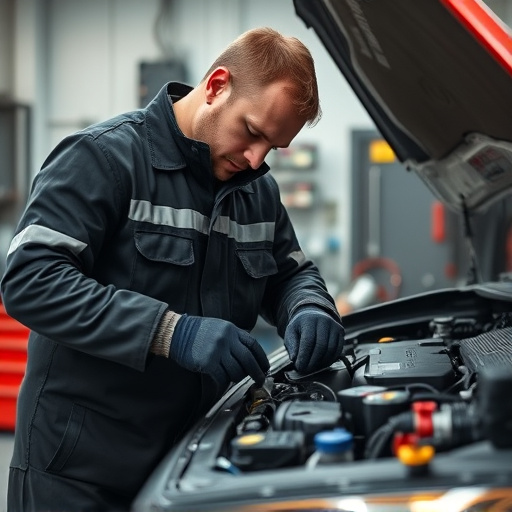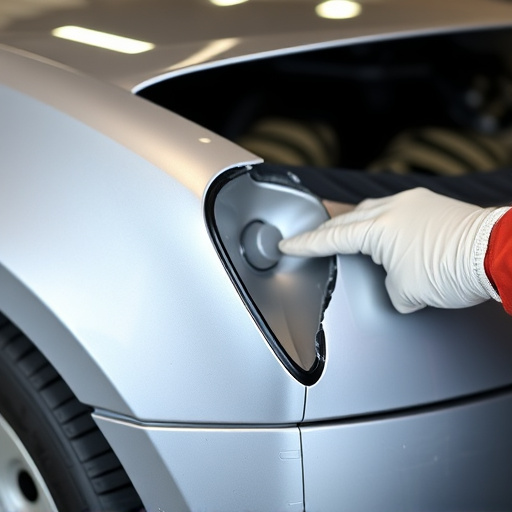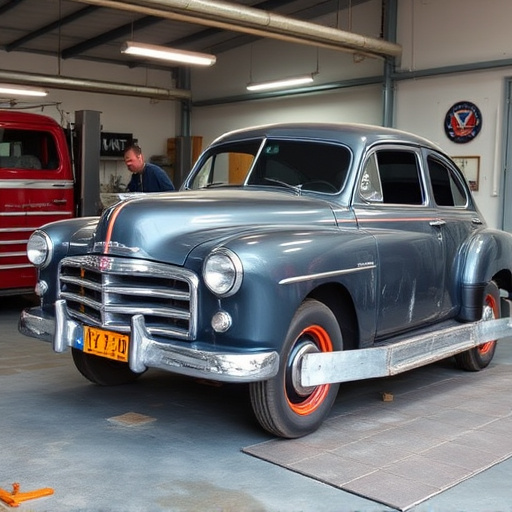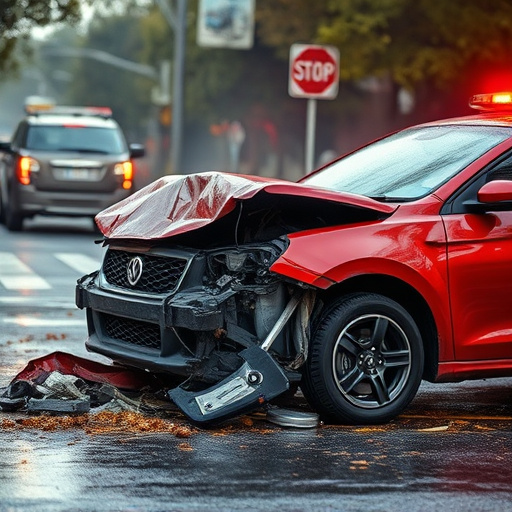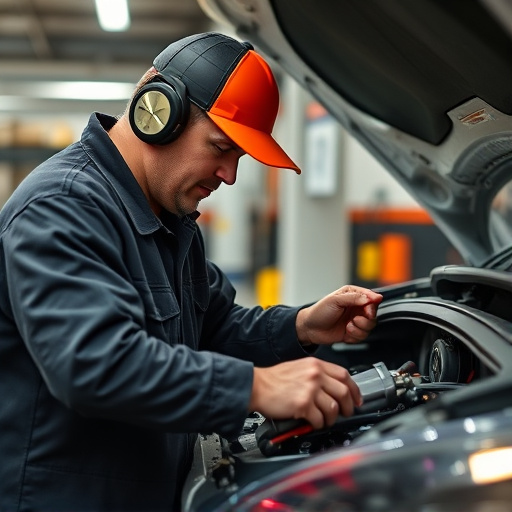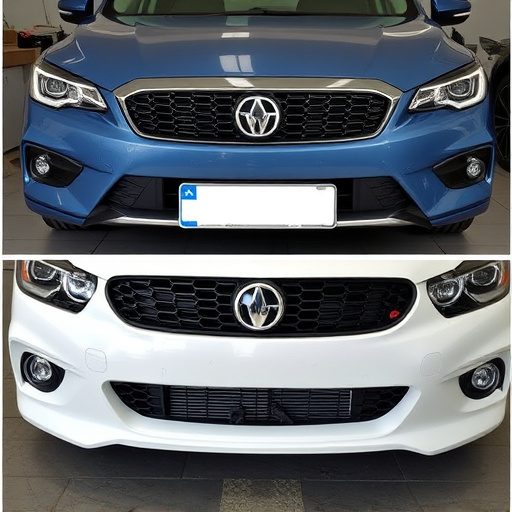Category: Tesla accident repair standards
Tesla Accident Repair Standards: Revolutionizing Automotive Safety and Repair
Introduction
In an era where technology is transforming the automotive industry, Tesla has emerged as a pioneer in electric vehicle (EV) manufacturing, pushing boundaries with innovative designs and advanced features. As Tesla’s global presence expands, so does its responsibility to establish robust safety standards for accident repair. This article delves into the intricate world of Tesla accident repair standards, exploring how these guidelines shape post-crash service, impact the automotive industry, and contribute to safer roads worldwide. By examining historical development, current practices, and future prospects, we aim to provide a comprehensive understanding of this vital topic.
Understanding Tesla Accident Repair Standards
Definition: Tesla accident repair standards refer to a set of comprehensive guidelines and protocols specifically designed for repairing vehicles manufactured by Tesla, Inc. These standards encompass not only structural integrity but also the unique electrical and software systems found in Tesla’s electric cars. They serve as a blueprint for authorized service centers and body shops, ensuring consistent and high-quality repairs.
Core Components:
-
Structural Repair: This involves restoring the vehicle’s frame to its original specifications after an accident. Tesla emphasizes precision welding and utilizes advanced laser scanning technology to ensure accurate measurements for panel replacement.
-
Electrical System Integration: Tesla vehicles are renowned for their sophisticated electric powertrains and interconnected digital systems. Repair standards dictate proper handling of high-voltage batteries, electrical wiring, and computer modules to maintain vehicle safety and performance.
-
Software Updates and Calibration: Every Tesla is equipped with over-the-air (OTA) software update capabilities. Post-repair, vehicles must be calibrated to ensure sensors, cameras, and autonomous driving systems function optimally.
-
Quality Assurance: Rigorous quality control checks are integral to these standards, ensuring that every repaired vehicle meets Tesla’s stringent quality and safety criteria.
Historical Context: The development of Tesla accident repair standards can be traced back to the company’s early days when it recognized the unique challenges posed by repairing its all-electric vehicles. As Tesla’s customer base grew, so did the need for standardized procedures. In response, Tesla established a network of certified service centers and developed training programs to educate technicians on their specialized repair methods.
Significance: These standards are crucial for several reasons:
- Safety: Ensuring that repaired Teslas maintain their high safety ratings is paramount. Proper restoration of structural integrity and electrical systems minimizes risks associated with post-crash vehicles.
- Customer Satisfaction: Consistency in repairs guarantees customers receive vehicles that perform as new, enhancing brand loyalty.
- Warranty Compliance: Tesla’s warranty terms dictate that vehicles must be repaired according to company standards to remain valid, protecting both the manufacturer and consumers.
Global Impact and Trends
Tesla’s global influence on accident repair standards is evident across multiple continents, each region adopting and adapting these guidelines to suit local needs and regulations.
North America: The United States and Canada have been at the forefront of Tesla’s expansion, leading to well-established networks of certified service centers. These regions benefit from direct access to Tesla’s repair standards and training programs, ensuring a high level of expertise among technicians.
Europe: The European market, with its stringent safety regulations, has embraced Tesla’s standards, often incorporating them into regional guidelines. Countries like Germany and the UK have specialized training programs for Tesla repairs, fostering a skilled workforce.
Asia-Pacific: As Tesla solidifies its presence in China and other Asian markets, local service centers are adapting to Tesla’s standards while also respecting cultural and regulatory differences. This blend of global best practices and regional adaptations is shaping accident repair trends in the region.
Trends Shaping the Future:
-
Standardization vs. Local Adaptation: While a globalized approach to repair standards provides consistency, local variations will continue to emerge to address unique market conditions and regulatory frameworks.
-
Digital Integration: The digital transformation of the automotive industry is a key trend, with Tesla’s OTA software updates becoming a standard practice in accident repair. Technicians must be adept at handling digital systems during repairs.
-
Sustainability Focus: With growing environmental concerns, there is a push for eco-friendly repair practices, including the use of recycled materials and sustainable energy sources.
Economic Considerations
The economic implications of Tesla accident repair standards are multifaceted, affecting both the automotive industry and the broader economy.
Market Dynamics: The demand for specialized Tesla repair services has created new market opportunities. Certified service centers invest in advanced tools and training, attracting a skilled workforce and fostering competition within the industry.
Investment Patterns: Tesla’s growth has attracted significant investments in its supply chain, including parts manufacturing and distribution networks. This investment extends to accident repair infrastructure, ensuring that authorized service centers are well-equipped to handle Tesla repairs.
Economic Impact on Service Centers: Repair shops that specialize in Tesla vehicles often command higher service fees due to the specialized nature of their work. This premium pricing reflects the advanced training and equipment required for accurate repairs.
Cost Savings through Standardization: Standardized repair procedures can lead to reduced labor costs for both manufacturers and consumers, as consistent processes streamline the repair process.
Technological Advancements
Tesla’s commitment to technological innovation has significantly influenced accident repair standards, pushing the boundaries of what is possible in vehicle restoration.
Laser Scanning Technology: Tesla utilizes advanced laser scanning systems to capture precise 3D models of vehicles, aiding in panel replacement and ensuring accurate alignments. This technology ensures repairs match the original vehicle specifications.
High-Precision Welding: The company has pioneered precision welding techniques, allowing for intricate and structurally sound repairs. These methods are now industry standards, enhancing the overall quality of accident repairs.
Autonomous Repair Robots: Tesla is exploring the use of robotics in its service centers to handle repetitive tasks, increasing efficiency and reducing potential human errors during complex repairs.
Digital Twin Technology: This emerging technology involves creating a digital replica of a vehicle, enabling technicians to access detailed repair information and simulate procedures before actual work begins. It enhances accuracy and reduces the risk of mistakes.
Policy and Regulation
Governing bodies worldwide play a critical role in shaping Tesla accident repair standards through policies and regulations that ensure vehicle safety and consumer protection.
Safety Standards Organizations: International organizations like the International Organization for Standardization (ISO) and the United Nations Economic Commission for Europe (UNECE) set global safety standards for vehicles, which often serve as a foundation for national regulations.
Regional Regulations: Each region has its own regulatory bodies that mandate specific safety and repair standards. For instance:
- The National Highway Traffic Safety Administration (NHTSA) in the US sets federal motor vehicle safety standards.
- The European Union’s (EU) New Car Assessment Program (Euro NCAP) assesses and rates new cars based on their safety performance.
- China’s Ministry of Industry and Information Technology (MIIT) oversees automotive safety regulations.
Legislative Frameworks: These regulatory bodies collaborate with Tesla to ensure its repair standards align with legal requirements, fostering a culture of safety and quality across the industry. Regular reviews and updates to these frameworks keep pace with technological advancements.
Challenges and Criticisms
Despite its many achievements, Tesla’s accident repair standards face several challenges that require strategic solutions.
Skill Gap: As technology advances, there is a growing demand for technicians skilled in handling modern electric vehicle systems. Addressing this skill gap through comprehensive training programs is crucial to ensure adequate repair capabilities.
Access to Training: Ensuring all authorized service centers have access to Tesla’s training materials and resources can be challenging, especially for smaller businesses in remote areas. Online training platforms and webinars could help bridge this gap.
Standardization vs. Flexibility: While standardization provides consistency, it may struggle to accommodate the rapid pace of technological change. Balancing standardized procedures with adaptable guidelines will be essential to keep up with emerging technologies.
Cost Implications: Specialized repairs can be more expensive, potentially deterring some owners from using authorized service centers. Making repair costs more transparent and offering incentives for timely repairs could address these concerns.
Case Studies: Successful Implementations
Real-world applications of Tesla accident repair standards offer valuable insights into their effectiveness and impact.
Case Study 1: Severe Front-End Collision, USA
A Tesla Model 3 was involved in a severe front-end collision, sustaining significant damage to the grill, headlights, and bumper. The certified service center used laser scanning to create a digital model of the vehicle, enabling precise replacement parts ordering. Advanced welding techniques were employed for structural repairs, restoring the car’s original rigidity. After repair, extensive road testing confirmed the vehicle’s safety and performance, showcasing the standard’s effectiveness.
Case Study 2: High-Voltage Battery Repair, Europe
A Tesla Model S experienced a minor accident, but the key challenge was accessing and repairing the high-voltage battery pack without compromising safety. Specialized training and equipment allowed technicians to evacuate the battery safely, perform necessary repairs, and recharge it without incident. This case highlights the critical role of proper training in handling Tesla’s unique powertrains.
Case Study 3: Software Update Integration, Asia
After a fender bender, a Tesla owner brought their vehicle to a local service center for repairs. The shop utilized Tesla’s OTA software update capabilities post-repair, ensuring the car’s autonomous driving features and camera systems were fully functional. This case illustrates the seamless integration of software updates into accident repair processes.
Future Prospects: Emerging Trends and Strategic Considerations
The landscape of Tesla accident repair standards is poised for further evolution, driven by technological advancements and shifting market dynamics.
Emerging Trends:
-
Autonomous Repair: The development of self-driving cars will influence accident repair procedures, with potential improvements in damage assessment and repair automation.
-
Artificial Intelligence (AI) Integration: AI can analyze vehicle data to predict repair needs and optimize repair processes, reducing downtime and costs.
-
Sustainable Materials: There will be a growing emphasis on using eco-friendly materials and practices during repairs to align with Tesla’s environmental sustainability goals.
Strategic Considerations for Tesla:
-
Global Training Expansion: Expanding training programs globally, especially in regions with emerging Tesla markets, will ensure a skilled workforce across all continents.
-
Continuous Technological Feedback: Encouraging open communication between Tesla and its service centers about technological advancements ensures that repair standards evolve alongside innovations.
-
Customer Education: Educating Tesla owners about the importance of timely repairs and the benefits of using authorized service centers can foster brand loyalty and improve safety on the road.
Conclusion: Shaping a Safer Automotive Future
Tesla accident repair standards represent a significant milestone in the evolution of automotive safety and service. As Tesla continues to expand globally, its commitment to rigorous repair standards will contribute to safer roads and enhanced customer experiences. The seamless integration of technology, training, and regulation ensures that Tesla vehicles are repaired to the highest specifications, setting a new benchmark for the industry.
By addressing challenges, embracing technological advancements, and collaborating with regulatory bodies, Tesla is paving the way for a future where accident repair standards become increasingly sophisticated, efficient, and environmentally conscious. This article has provided a comprehensive overview of this critical topic, underscoring the importance of continued innovation and collaboration in the automotive sector.
FAQ Section:
Q: Are Tesla’s accident repair standards different from traditional vehicle repair protocols?
A: Yes, Tesla’s standards are specialized and tailored to their unique electric vehicle designs, including advanced battery systems and software. They go beyond conventional repair methods to ensure safety and performance for Tesla vehicles.
Q: How do I know if a service center is certified to perform Tesla repairs?
A: Certified service centers display the Tesla logo and have trained technicians who adhere to company standards. You can also verify their certification status on Tesla’s official website.
Q: Can Tesla accident repair standards vary between countries?
A: While the core principles remain consistent, local variations are possible due to regulatory differences. Tesla works closely with local authorities to ensure compliance while accommodating regional requirements.
Q: What role does digital technology play in modern Tesla repairs?
A: Digital technology is integral to Tesla repairs, from laser scanning and software updates to remote diagnostics. These advancements enable more precise, efficient, and safe repair processes.
Q: How do I stay updated on the latest Tesla accident repair standards?
A: Tesla provides regular training programs and resources for authorized service centers. You can also subscribe to Tesla’s official newsletters or visit their website for the latest updates and guidelines.
Tesla Repair Standards: Revolutionizing Insurance Claim Validations
Tesla’s Strict Repair Standards: Ensuring Quality Post-Accident
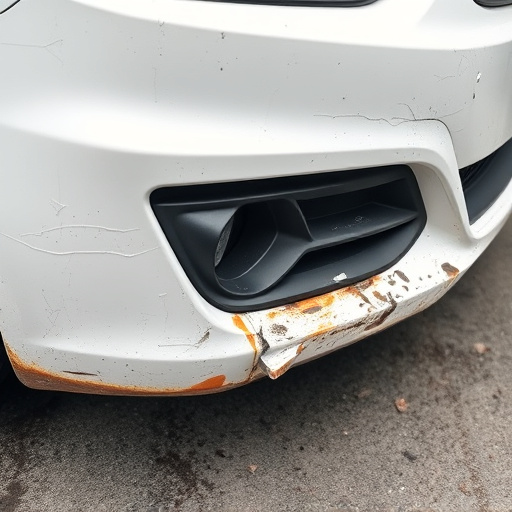
Tesla sets high standards for accident repair with a rigorous process focusing on structural integri…….
Tesla Accident Repair: Precise Calibration for Unwavering Safety
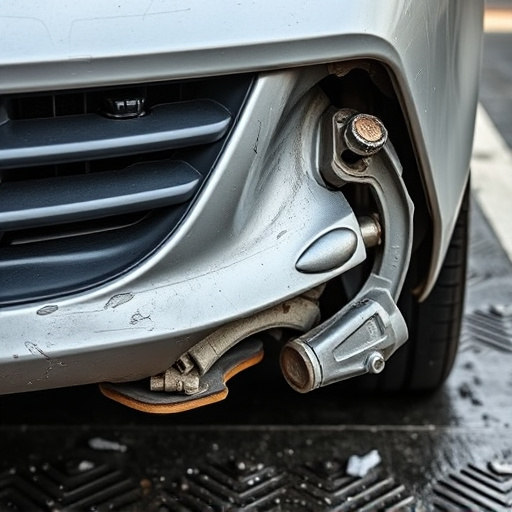
Tesla sets industry-leading safety standards in accident repair by meticulously maintaining structur…….
Matching Tesla Factory Toleranes for Quality Accident Repairs
Tesla Crumple Zone Restoration: Expert Repairs for Safety and Accuracy
Tesla Accident Repair: Bonding Techniques for Safety and Longevity

Tesla accident repair requires specialized knowledge and tools to meet strict standards. Proper pane…….
Tesla Accident Repair: Aluminum & Composite Standards Deep Dive
Tesla Repair: Advanced Welding & Adhesives for Quality Standards

Tesla accident repair standards emphasize precision using advanced welding and specialized adhesives…….
Tesla Repair: ADAS Sensor Calibration for Safe, Efficient Vehicles
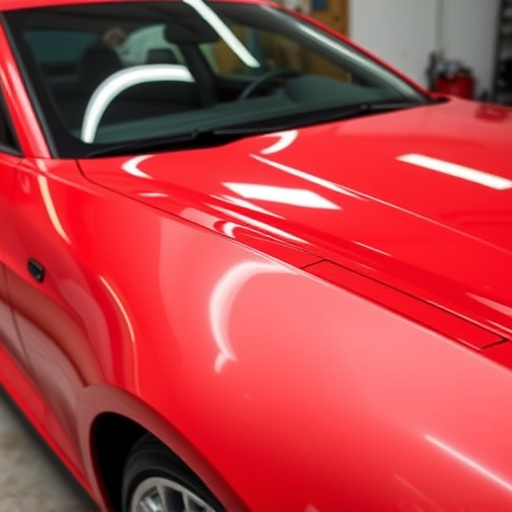
Tesla accident repair standards emphasize sensor realignment for Advanced Driver Assistance Systems…….




